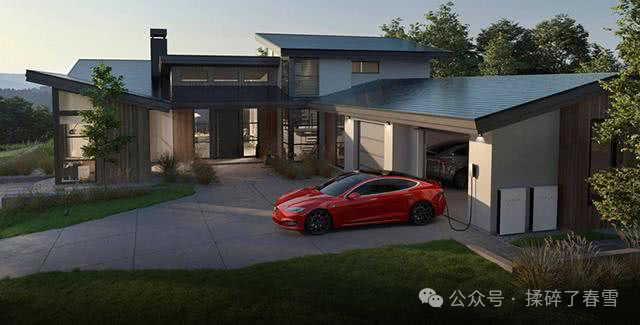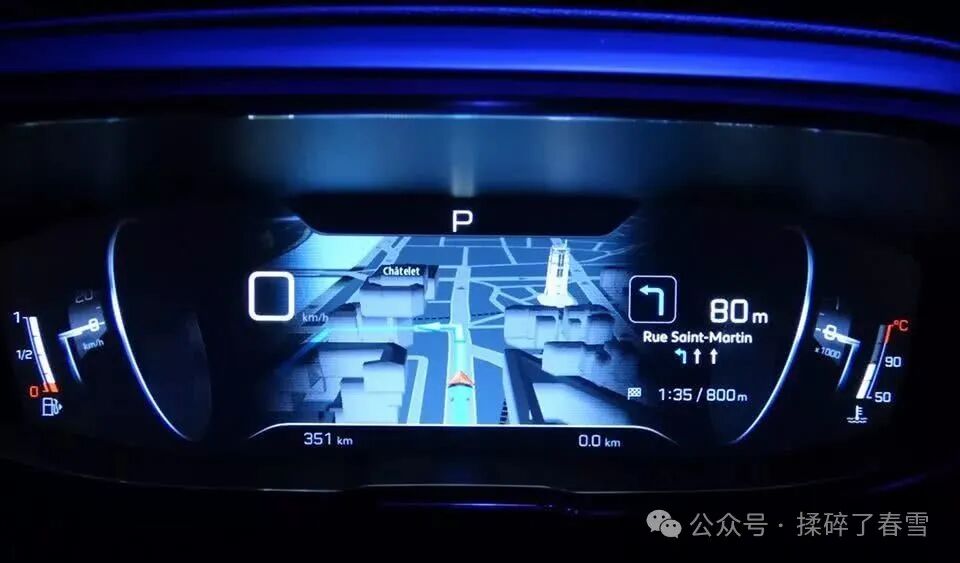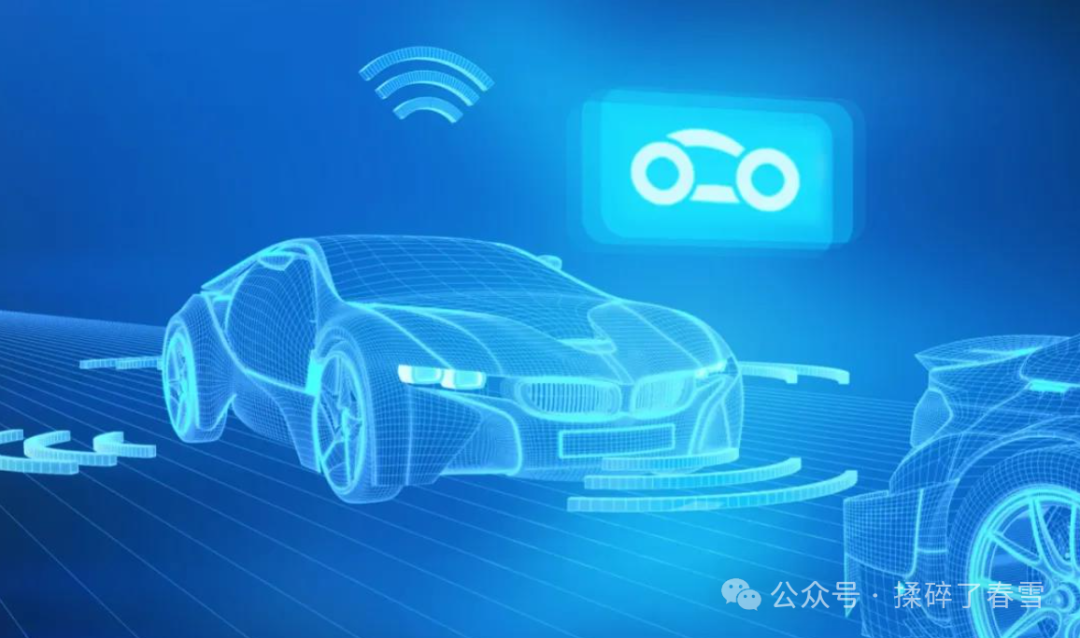Have you ever thought that future cars will not just be a means of transportation, but will also connect with your smart home devices, becoming your “smart assistant”? Indeed, the integration of the Internet of Vehicles and smart homes is gradually changing our way of life. Just like you can control your home’s air conditioning, lighting, and security systems through your smartphone now, future cars will also be able to interface with smart devices at home, providing you with an unprecedented convenient experience. So, how exactly do the Internet of Vehicles and smart homes collaborate? What kind of “smart assistant” will future cars become? 1. Internet of Vehicles: The “Smart Brain” of CarsThe Internet of Vehicles, as the name suggests, connects cars to external networks, creating an intelligent and interconnected driving environment. You can imagine this technology as equipping cars with a “smart brain” that not only allows the car to “understand” your needs but also seamlessly connects with surrounding smart devices. For example, some smart cars can already execute commands from the owner through voice recognition: opening windows, adjusting seats, playing music, and navigating routes can all be done by simply speaking. No more worrying about finding buttons; it’s like having a super considerate assistant.Furthermore, the Internet of Vehicles can enable vehicles to monitor road conditions in real-time, automatically update navigation information, and even switch driving modes during travel to provide the most suitable driving experience. For instance, when you are in the city, the vehicle will automatically select energy-saving mode; while on the highway, it will switch to a more efficient driving mode. Such an intelligent driving method truly deserves applause for the future of smart cars!2. Smart Homes: Seamless Connection Between Cars and Home DevicesSmart homes have long become a standard in modern life. From smart speakers to smart locks, and automated lighting systems, more and more devices are becoming “smart”. Future smart cars will also establish closer connections with smart devices at home, forming an interconnected living system.For example, when you are about to leave home, the smart car can automatically link with the home system. You just need to give a simple command, and the car can connect to the home’s smart devices via the Internet of Vehicles, automatically locking doors and windows, turning off unnecessary appliances, adjusting indoor temperature, and even turning on the coffee machine in the kitchen. This is not just for convenience; it can also enhance your home’s security and energy efficiency. Imagine, before you leave, you no longer need to check everything; the smart system at home and the car have already taken care of everything for you, it’s simply a benefit for the lazy!Moreover, when you are close to home, the car’s navigation system can accurately calculate your arrival time and then synchronize with home devices via the Internet of Vehicles, opening the garage door in advance, adjusting indoor temperature, and even playing your favorite music. You can enjoy a perfect home experience as soon as you walk in, without any waiting hassle; everything is already prepared for you.
1. Internet of Vehicles: The “Smart Brain” of CarsThe Internet of Vehicles, as the name suggests, connects cars to external networks, creating an intelligent and interconnected driving environment. You can imagine this technology as equipping cars with a “smart brain” that not only allows the car to “understand” your needs but also seamlessly connects with surrounding smart devices. For example, some smart cars can already execute commands from the owner through voice recognition: opening windows, adjusting seats, playing music, and navigating routes can all be done by simply speaking. No more worrying about finding buttons; it’s like having a super considerate assistant.Furthermore, the Internet of Vehicles can enable vehicles to monitor road conditions in real-time, automatically update navigation information, and even switch driving modes during travel to provide the most suitable driving experience. For instance, when you are in the city, the vehicle will automatically select energy-saving mode; while on the highway, it will switch to a more efficient driving mode. Such an intelligent driving method truly deserves applause for the future of smart cars!2. Smart Homes: Seamless Connection Between Cars and Home DevicesSmart homes have long become a standard in modern life. From smart speakers to smart locks, and automated lighting systems, more and more devices are becoming “smart”. Future smart cars will also establish closer connections with smart devices at home, forming an interconnected living system.For example, when you are about to leave home, the smart car can automatically link with the home system. You just need to give a simple command, and the car can connect to the home’s smart devices via the Internet of Vehicles, automatically locking doors and windows, turning off unnecessary appliances, adjusting indoor temperature, and even turning on the coffee machine in the kitchen. This is not just for convenience; it can also enhance your home’s security and energy efficiency. Imagine, before you leave, you no longer need to check everything; the smart system at home and the car have already taken care of everything for you, it’s simply a benefit for the lazy!Moreover, when you are close to home, the car’s navigation system can accurately calculate your arrival time and then synchronize with home devices via the Internet of Vehicles, opening the garage door in advance, adjusting indoor temperature, and even playing your favorite music. You can enjoy a perfect home experience as soon as you walk in, without any waiting hassle; everything is already prepared for you. 3. The Smart Experience for Future Car Owners: From Inside the Car to HomeAs the Internet of Vehicles and smart homes further integrate, future cars will not just be transportation tools but will become an extension of home life. Imagine sitting in the car, you can control various functions inside the car through voice or touch, while the vehicle can also interact in real-time with smart devices at home. If it’s a cold winter day, the car’s heating will already be prepared for you, and the snow outside will be cleared with the help of the home’s smart system. Or, when you are about to head to an important meeting, the car can automatically adjust the interior temperature, seat comfort, and even play some relaxing music to keep you in the best state throughout the journey.This seamless connection experience is not just limited to the personal comfort of the car owner; it can also provide more safety guarantees. For example, when the car is connected to the home security system, the owner can check the home’s security status through the car’s screen. If the system detects any anomalies at home, it can alert the owner through the smart car and even automatically link with the home’s alarm system to ensure family safety. The interaction between cars and homes is no longer just about convenience; it’s a comprehensive life guarantee.4. Competitor Model Comparison: Which Smart System is Stronger?Nowadays, many brands of smart cars are making strides in the field of the Internet of Vehicles and smart homes. Let’s take a look at a few representative models and how they connect with smart homes:Tesla Model S: Tesla’s Autopilot system has made integration with smart homes no longer a challenge. You can control home smart devices through Tesla’s mobile app, and even connect the vehicle with the home’s Nest thermostat, so that when the owner arrives, the home’s temperature is already adjusted. The advantage is that the system is very smooth and has high compatibility; the downside is that it has limited compatibility with some traditional smart home brands.NIO ES8: NIO owners can link with home smart devices through the NIO App, allowing the car to prepare settings for home smart air conditioning, lighting, and more. The advantage is that NIO’s Internet of Vehicles system has high customization features, allowing owners to tailor their desired smart home scenarios; the downside is that integration with some non-NIO smart home devices is still not perfect.
3. The Smart Experience for Future Car Owners: From Inside the Car to HomeAs the Internet of Vehicles and smart homes further integrate, future cars will not just be transportation tools but will become an extension of home life. Imagine sitting in the car, you can control various functions inside the car through voice or touch, while the vehicle can also interact in real-time with smart devices at home. If it’s a cold winter day, the car’s heating will already be prepared for you, and the snow outside will be cleared with the help of the home’s smart system. Or, when you are about to head to an important meeting, the car can automatically adjust the interior temperature, seat comfort, and even play some relaxing music to keep you in the best state throughout the journey.This seamless connection experience is not just limited to the personal comfort of the car owner; it can also provide more safety guarantees. For example, when the car is connected to the home security system, the owner can check the home’s security status through the car’s screen. If the system detects any anomalies at home, it can alert the owner through the smart car and even automatically link with the home’s alarm system to ensure family safety. The interaction between cars and homes is no longer just about convenience; it’s a comprehensive life guarantee.4. Competitor Model Comparison: Which Smart System is Stronger?Nowadays, many brands of smart cars are making strides in the field of the Internet of Vehicles and smart homes. Let’s take a look at a few representative models and how they connect with smart homes:Tesla Model S: Tesla’s Autopilot system has made integration with smart homes no longer a challenge. You can control home smart devices through Tesla’s mobile app, and even connect the vehicle with the home’s Nest thermostat, so that when the owner arrives, the home’s temperature is already adjusted. The advantage is that the system is very smooth and has high compatibility; the downside is that it has limited compatibility with some traditional smart home brands.NIO ES8: NIO owners can link with home smart devices through the NIO App, allowing the car to prepare settings for home smart air conditioning, lighting, and more. The advantage is that NIO’s Internet of Vehicles system has high customization features, allowing owners to tailor their desired smart home scenarios; the downside is that integration with some non-NIO smart home devices is still not perfect. BYD Han EV: This car’s smart system connects with home devices through the DiLink smart network system, allowing owners to control home lighting, air conditioning, and other devices via smartphone. The advantage is that the system is easy to operate; the downside is that it has weak compatibility with some high-end smart home products, which may require additional bridging devices.
BYD Han EV: This car’s smart system connects with home devices through the DiLink smart network system, allowing owners to control home lighting, air conditioning, and other devices via smartphone. The advantage is that the system is easy to operate; the downside is that it has weak compatibility with some high-end smart home products, which may require additional bridging devices.